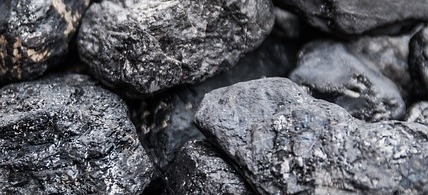Can India replace imported coal with what is obtainable at home?

Posted on 02 Feb 2023
The Government of India has set up an
ambitious target to produce around 1.3 bt of coal by FY25 and around 1.5 bt by
FY30. India achieved a record coal production of 780 mt and auctioned 64 coal
mines for commercial usage as per the Year End Review 2022 released by the Ministry
of Coal.
In the process, the government ensured that
thermal power plants and other sectors across the country had adequate access
to coal. The ministry’s moves such as opening up coal mines for commercial
auction, holding investors’ conclaves, etc., are likely to help India’s journey
in energy security.
According to government estimates India’s
coal inventory as on April 1, 2022, recorded an increase of around 9,285 t as
against a year before, rising from around 352,125 t to 361,411 t. Production in
FY 22 for April to November period surged from 448 mt to 524 mt, recording a
17% growth.
Interestingly, the government has upped the
ante for customer satisfaction through quality assessment of supplies through
independent third-party sampling agencies.
In addition to the Central Institute of Mining
& Fuel Research (CIMFR) and Quality Council of India (QCI), two more
agencies, SGS India Private Limited for power and non-power sectors and Mitra S
K Private Limited for power sectors have been roped in as third party agencies.
Coal India Limited (CIL) has done a
commendable job in improving the coal quality through some key initiatives such
as mobile crushers, procurement of online ash analyzers, first-mile
connectivity, etc.
Such better governance of quality coal and
grade conformity through third-party sampling methods has enhanced the quality
from 65% in April to March 2021 period to 69% for the April to November 2022
period.
The government is also mooting the idea of the gasification of coal significantly. This will enable India to scale down its
energy imports and help meet the CoP-21 Paris Agreement commitments.
To realize this objective CIL has inked
pacts with Bharat Heavy Electricals Limited (BHEL), Gas Authority of India
Limited (GAIL), and Indian Oil Corporation Limited (IOCL).
The current geopolitical situation is also
favouring the move towards exploring domestic resources. In the wake of the
Russia-Ukraine war and sanctions on Russian coal, many countries turned to
Australia for high-grade coal.
With Australian coal prices skyrocketing
there was a steep plunge in shipments to India from Australia. In CY 2022, we
witnessed a close to 50% drop compared to a year ago. There was a substantial
drop in buying 5500-grade NAR coal. Larger parts of Asia however continued to
do business with Indonesia.
India has a huge domestic market with good
consumption for coal from power and many other sectors. Relying on imports
wherein the market situation nowadays is volatile can tighten the purse strings
making it obvious that we need to find Atmanirbharata.
Can India replace imported coal with what
is available domestically? Market analysts opine that it can but with further
improvement in domestic supplies and railway logistics. Considering that
there’s been a rebound in captive production and the coming to age of private
commercial mines, there is a better chance of fulfilling this vision.
India’s earlier efforts in reducing coal imports
first during the regime of Shri Manmohan Singh’s UPA II and later when Shri
Narendra Modi, the current Hon’ble Prime Minister of India took over had fallen
flat.
India has huge domestic availability of
coal, however, the failure to convert this asset into a productive one ensured
that the country met its needs through imports. The fall in global commodity
prices during the previous decade also led to buyers favouring cheaper imports.
The pandemic and the ongoing war altered
this process and once again business entities began coming back to homegrown
coal. With private mines beginning production, we may see a welcome change. Much
also depends on the railways since that is a more cost-effective mode of
transportation compared to transporting through roads.
Increased availability of rakes will ensure
seamless transportation from one region to another and if we get more dedicated
rakes that will help immensely. This coupled with adequate mining will help
replenish stocks and bring down shortages in the market.
India could perhaps then rewrite history
and open a new chapter eventually paving way for not only healthy domestic
consumption from what is available indigenously but also exploring markets
overseas in a big way.
- India imports 2.6 Mt steam coal, 0.8 Mt coking coal (23–29 Mar)
- India boosts energy security with record coal production
- Indian Government lifts restrictions on coal purchases for power plants
- India imports 4 Mt steam coal, 1.4 Mt coking coal (16–22 Mar)
- Powering the grid: The impact of electric vehicles on India’s energy infrastructure
- India imports 2.9 Mt steam coal, 1.3 Mt coking coal (09–15 Mar)
- India’s rising coal use: Balancing energy demand and sustainability goals
- India imports 2.8 Mt steam coal, 0.6 Mt coking coal (02–08 Mar)
- India gears up to lead global energy sector: Minister calls for unified electrical expo
- India's Power Capacity up 87% in Last 11 Years, RE Capacity